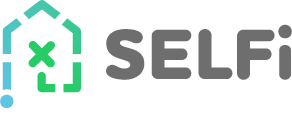You’ve heard of the 15-year mortgage and the 30-year mortgage, but soon, for a select group of borrowers, there’ll be a 40-year mortgage option. Ginnie Mae, the government-owned mortgage bond corporation, recently announced a new, longer mortgage term, available to homeowners with 30-year mortgages from one of the government agencies backed by Ginnie Mae MBS (mortgage-backed securities). These new loans will be available come October 2021.
The loans that comprise the Ginnie Mae MBS are guaranteed or insured by the FHA, VA or the USDA— Federal Housing Administration and Department of Veterans Affairs, the U.S. Department of Agriculture, the Department of Housing and Urban Development and the Office of Public and Indian Housing, agencies that typically loan to people who may not qualify for conventional mortgages—either because the client does not meet the income requirements or because they don’t have great credit or a large enough down payment.
Borrowers have a green light from Ginnie to extend their existing 30-year mortgage to 40, but it is up to the individual agencies to decide how they will institute the new mortgage. U.S. Department of Veterans Affairs spokesman Gary Kunich told the Los Angeles Daily News, “VA is aware of the change that Ginnie Mae has instituted. Once the moratorium on foreclosure and evictions for VA-backed loans ends, VA will provide appropriate guidance.”
![]()
“An extended term up to 40 years, all else equal, results in a lower monthly mortgage payment than a 30-year mortgage, helping borrowers in financial distress afford their mortgage.”
The need for a 40-year option for modified mortgages became clear during the COVID crisis, which put many homeowners in a precarious financial position, with many homeowners behind on their payments. The 40-year mortgage modification option is intended to help them get caught up. But instead of requiring borrowers to make a lump-sum payment to get out of default, the proposed restructuring is designed to prevent people from losing their investment and adding the funds for the missed payments over a longer period of time.
“Ginnie Mae has created this new MBS option to help homeowners in distress,” says Ginne Mae spokesperson, Douglas Robinson. “An extended term up to 40 years, all else equal, results in a lower monthly mortgage payment than a 30-year mortgage, helping borrowers in financial distress afford their mortgage.”
“Ginnie Mae has been integral to the interagency actions to prevent foreclosure for homeowners experiencing financial hardship as a result of COVID-19,” said Alanna McCargo, HUD Senior Advisor to Secretary Marcia Fudge, in a statement. “The challenges of the last year require meaningful solutions to help keep people in their homes, which has been a priority for Secretary Fudge. As interest rates rise, this 40-year feature will enable more payment reduction options to help homeowners. Today’s step by Ginnie Mae demonstrates a commitment to a more balanced and equitable housing finance system and demonstrates the critical role the agency plays in supporting government mortgage programs in the secondary market.”
While it sounds like a refinance, it is not. And for now, at least, 40-year mortgage terms for new mortgages and refinancing are not on the table. Let’s take a closer look at how this modification is different from a refinance:
A modified loan takes the original terms of your loan and extends the time period generally without changing the interest rate. The new loan—technically called Pool Type C-ET—offers a lower monthly payment for the same mortgage.
![]()
“A modified loan takes the original terms of your loan and extends the time period generally without changing the interest rate.”
“The simplest comparison of the modification is typically something offered to you by the bank whereas a refinance is something that while you may be offered by the bank, typically, you might also shop around,” says Joseph R. Mason, a professor of finance at Louisiana State University, and a former senior financial economist at the Office of the Comptroller of the Currency. “In a refinance the old loan goes away and a new one starts. Whereas in a modification, the old loan continues under new terms.”
It’s a tricky line to navigate says Mason. Forty-year mortgages were also common during the financial crisis of 2008. Such modifications, he says, are “a way to create affordability where it doesn’t exist. It might be a good thing. It might just be kicking the can down the road, which was the same argument we had about modifications in the crisis. If you look at modified loans since the crisis, many of them received [as many as] five to eight modifications.”
And he says, while you can refinance to a different loan with a shorter mortgage term later, you might end up paying way more for that house than intended. “If you run the amount of interest that the borrower pays on the 40 year, it’s very different than the 30 year,” says Mason. ”Who’s really being helped here—is it the borrower or is it the bank?”
“It’s not good or bad,” says Brendan McKay, a mortgage broker, and the president of the Association of Independent Mortgage Experts, based in Chevy Chase, Maryland. “It’s like a lot of financial tools, it can be used for good or bad, but as long as people have their eyes wide open for it. People are coming out of the pandemic, a lot of people might have very different income situations than what it was prior to the pandemic, but they obviously want to keep their house. And currently, they might not be making mortgage payments on their home because of the CARES Act,” which allows for indefinite forbearance until it ends.
McKay points out that the bulk of FHA loans backed by Ginnie Mae, because they are issued to people who do not have great credit, or have unstable employment situations, make this pool more vulnerable to default. “Those people were more likely to be economically impacted by the pandemic.”
Let’s take a closer look at the pros and cons of a 40-year mortgage.
PROS
- Lower payments
Because the payments will be stretched over a longer amount of time, they will be lower than the original payment. For example, with a $500,000 mortgage
- Staving off Foreclosure
The extended time frame means that borrowers don’t have to make a lump-sum payment to get caught up. The aim is to prevent people from losing their homes.
- More equitable loan opportunities
Many of the people who were affected negatively by the COVID-19 crisis are struggling to pay their mortgages. The new structure could allow homeowners experiencing financial difficulties to stay in their home.
CONS
- Limited to existing 30-year Ginnie Mae mortgages only. This mortgage can’t be given to new borrowers, but rather, helps securitize loans that are in default. The government agencies like the FHA and VA will decide in October how the loans can be executed. These terms are not available to conventional borrowers.
- Longer payment time = more money paid overall
Just like a credit card, if you only make the bare minimum payment, you’ll be paying more in interest rather than the principle. It can be the equivalent of treading water. Over time you may be paying thousands of dollars more in interest, but in the short term, until things stabilize, you could have a couple hundred dollars back in your pocket, to save, or pay off credit cards.
“In a vacuum that’s a negative thing, but because that can be paid back over a longer period of time it will reduce their payments on a monthly basis,” says McKay.
- Borrowers in default might find themselves right back to where they started.
“Well, the tough policy question is the same as it was in the crisis: Are these individuals better off renting or owning? The policy seems to be continued— “unbridled homeownership is good no matter what,” Mason says. “One has to ask why they’re in default, right?” he says. “If you’re in a volatile industry, where you can find yourself unemployed fairly regularly, is extending your term to 40 years going to help you? Or are you going to find that you’re unemployed in the next cycle, four or five years from now?”
The modified 40-year mortgage might be the last resort for those who want to hold on to their homes. Or, says Mason, for people who are looking at their home as an investment that might grow 30 percent in value.
The 40-year mortgage isn’t perfect, but it’s better than the other option. “The other option oftentimes is foreclosure, and the lender doesn’t want that either, “says McKay. “Despite popular belief, lenders and banks do not want to take people out of their houses. Ever.”

The elimination of the adverse market fee makes refinancing more affordable in 2021.

